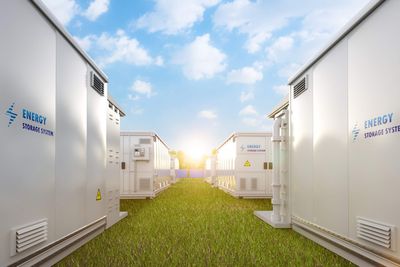tapping in
University of Houston selected for DOE-backed energy storage innovation initiative

The University of Houston has joined the Energy Storage Research Alliance, one of two DOE-backed energy innovation hubs. Photo via Getty Images
The University of Houston was selected for a new energy storage initiative from the United States Department of Energy.
UH is part of the Energy Storage Research Alliance (ESRA), which is one of the two energy innovation hubs that the DOE is creating with $125 million. The DOE will provide up to $62.5 million in ESRA funding over a span of five years.
“To fuel innovation and cultivate a sustainable and equitable energy future, all universities, government entities, industry and community partners have to work together,” Ramanan Krishnamoorti, vice president for energy and innovation at UH, says in a news release. “No one person or entity can achieve all this by themselves. As the Energy University and a Carnegie-designated Tier One research university, located in Houston — a center of diverse talent and experience from across the energy industry — UH has a unique advantage of continuing to build on Houston’s global leadership and demonstrating solutions at scale.
The hubs will attempt to address battery challenges and encourage next-generation innovation, which include safety, high-energy density and long-duration batteries. The batteries will be made from inexpensive, abundant materials, per the release.
The work that will be done at ESRA and other hubs can optimize renewable energy usage, reduce emissions, enhance grid reliability, and assist in growing electric transportation, and other clean energy solutions.
ESRA will bring in 50 researchers from three national laboratories and 12 other universities, including UH. The deputy lead of the soft matter scientific thrust and the principal investigator for UH’s portion of the project will be Yan Yao. Yao is the Hugh Roy and Lillie Cranz Cullen Distinguished Professor at the UH Cullen College of Engineering and principal investigator at the Texas Center for Superconductivity.
ESRA will focus on three interconnected scientific thrusts and how they work together: liquids, soft matter, and condensed matter phases. Yao and his team have created next-generation batteries using low-cost organic materials. The team previously used quinones that can be synthesized from plants and food like soybeans to increase energy density, electrochemical stability and safety in the cathode. Yao’s team were the first to make solid-state sodium batteries by using multi-electron conformal organic cathodes. The cathodes had a demonstrated record of recharging stability of 500 charging cycles.
Robert A. Welch Assistant Professor of electrical and computer engineering at UH Pieremanuele Canepa, will serve as co-PI. Both will investigate phase transitions in multi-electron redox materials and conformable cathodes to enable solid-state batteries by “marrying Yao’s experimental lab work with Canepa’s expertise in computational material science,” according to the release.
Joe Powell, founding director of the UH Energy Transition Institute and a professor in the Department of Chemical and Biomolecular Engineering, will create a community benefit plan and develop an energy equity course.
“New energy infrastructure and systems can have benefits and burdens for communities,” Powell says in the release. “Understanding potential issues and partnering to develop best solutions is critical. We want everyone to be able to participate in the new energy economy and benefit from clean energy solutions.”
This project will be led by Argonne National Laboratory and co-led by Lawrence Berkeley National Laboratory and Pacific Northwest National Laboratory.
“This is a once in a lifetime opportunity,” adds Yao. “To collaborate with world-class experts to understand and develop new science and make discoveries that will lead to the next generation of batteries and energy storage concepts, and potentially game changing devices is exciting. It’s also a great opportunity for our students to learn from and work with top scientists in the country and be part of cutting-edge research.”